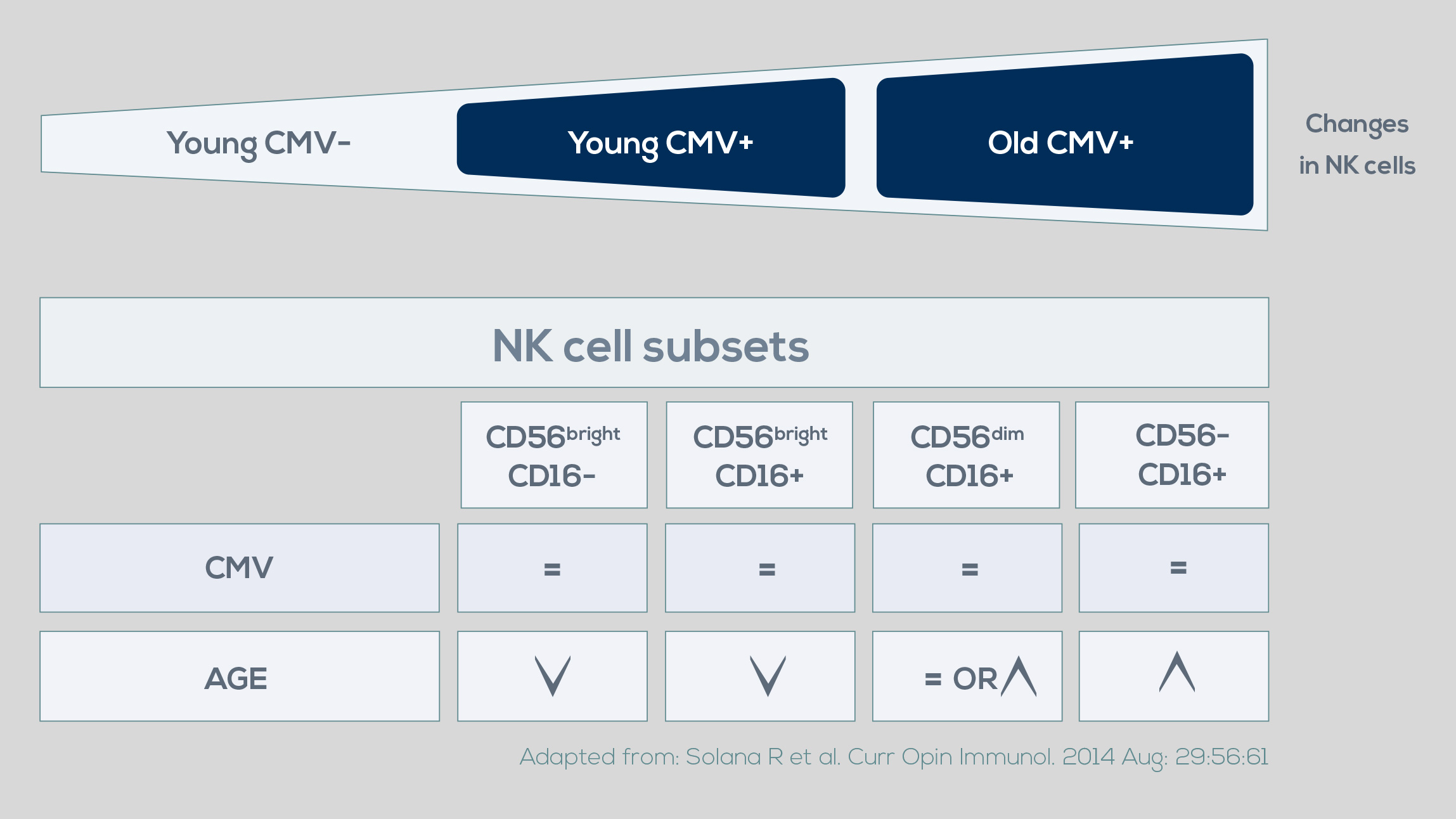Natural Killer (NK) cells are versatile lymphocytes involved in both innate and adaptive immunity that can destroy virus-infected and tumor cells. Their cytotoxicity relies on the fine balance between activating and inhibiting surface receptors. They can secrete cytokines, regulate dendritic cell maturation, and act as antigen presenting cells. NK cells can be divided in subsets based on CD56 and CD16 expression. CD56dimCD16+ cells are mature cytotoxic cells with a poor capacity to proliferate in response to cytokines. They represent up to 90% of NK cells circulating in peripheral blood cells, and directly kill target cells via exocytosis of granules, activation of cell death, or antibody-dependent cytotoxicity. After direct contact with target cells, CD56dimCD16+ cells secrete cytokines such as IFN-γ. CD56bright cells are less mature and are concentrated mostly in lymph nodes.
They produce and are responsive to cytokines; in particular, CD56brightCD16- cells produce high levels of cytokines and chemokines in response to IL-2, IL-12, and IL-18. Although there is some conflicting evidence, several data suggest that during aging absolute peripheral blood NK cell numbers tend to increase. However, starting from the age of 50 the production of new NK cells is reduced, indicating a high proportion of “old” NK cells in the elderly. CD56bright cells decrease, probably because of the age-associated changes in the hematopoietic stem cells in the bone marrow.
Consequently, in the elderly cytokine and chemokine production by NK cells is impaired. Instead, the production of IFN-γ increases, probably as a compensatory mechanism to maintain immunoregulatory role of CD56bright. Meanwhile, the subset of CD56- CD16+ NK cells increases. These cells are characterized by low replicative capacities and reduced cytokine production. CD57+CD56dimCD16+ cells increase too. This subpopulation, characterized by high cytotoxic capacity and reduced sensitivity to cytokines and replicative potential, is absent at birth and increases with age. However, CD57 seems to be a marker of NK cell expansion in response to CMV infection; in CMV-positive individuals, it accumulates over time to maintain NK cell homeostasis. However, the redistribution of NK cell subsets, with CD56bright decreasing and CD56- CD16+ cells increasing, is associated with aging but not with CMV infection. In general, low NK cytotoxicity is associated with an increase in morbidity (e.g. infections and mechanisms of atherosclerotic and neurodegenerative diseases) and mortality. On the contrary, high NK function is associated with longevity and good health.


